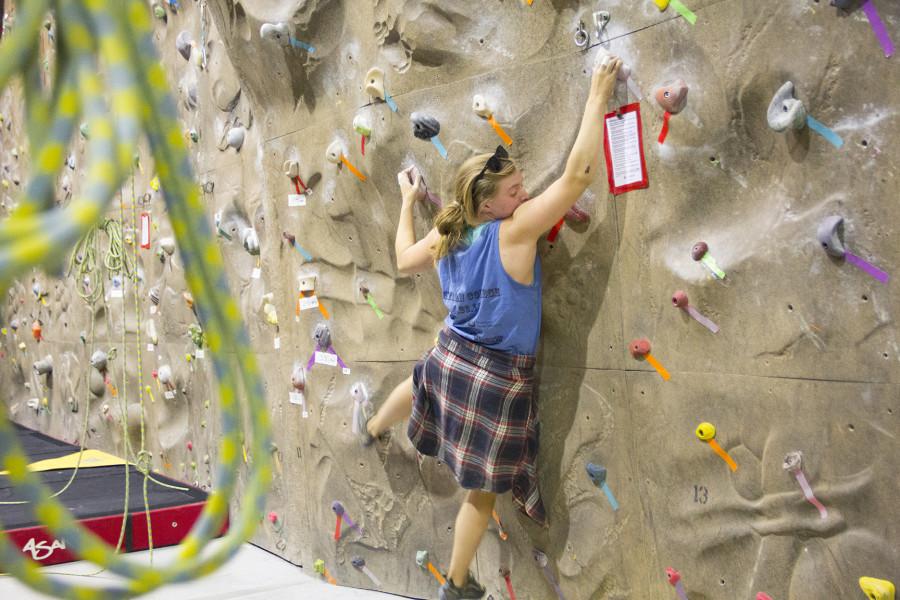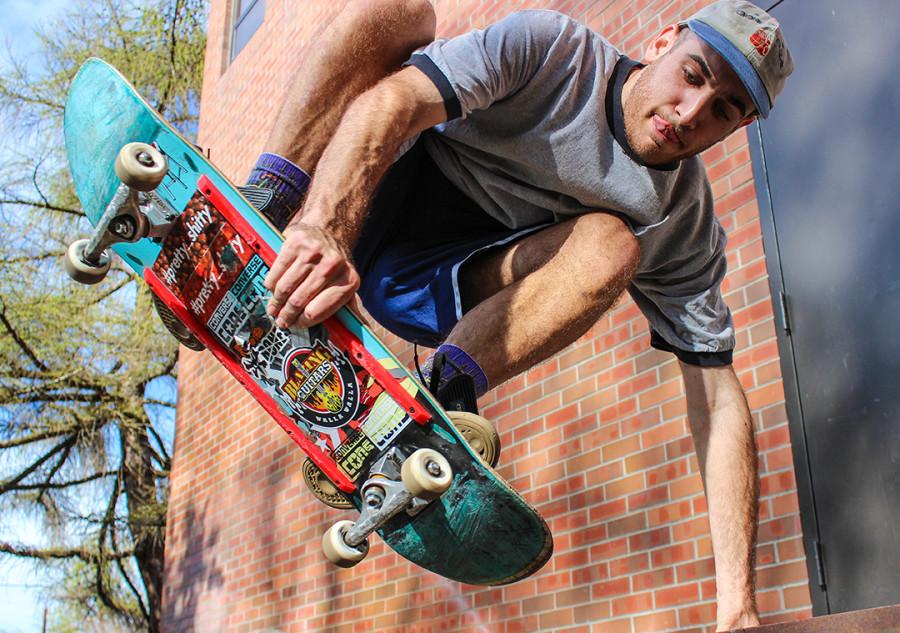Most students will admit the predominant music taste on campus is indie.
“That’s an overstatement, definitely a generalization, but I feel like we listen to a lot of indie music, and if you look at the bands we’ve brought, like St. Vincent and The Head and the Heart, it’s very much indie music,” said Morales.
Moyes agrees and describes the music scene here in Walla Walla as “organic.”
“Whenever I picture it, I envision downtown on Main Street and there’s all the wineries and wine dispensers and stuff and then there’s the people playing outdoor music in the summer,” said Moyes. “People here like the small, homegrown sort of music.”
Hidden under the haze of Mumford and Sons lyrics and Young the Giant vocals, the addictive pounding beats of the oft-forgotten rap genre are still audible. One example of rap’s pervasive nature is the popular slam poetry team on campus.
Morales actually did an independent study project her senior year of high school focusing on the spoken word and slam poetry movement which grew out of the hip-hop/rap movement of the 1990s. Beginning in the South Bronx, minority black and Latino youths used poetry to talk about their feelings of oppression. The first slam poetry was performed in a bar where poets read their work while drunk patrons shouted and hurled bottles at them.
“The poets would get angry and before you knew it, the poems became real and were written in a way that got people’s attention,” said Morales.
Eventually, people began taking notice and the Nuyorican Poets Café in New York opened. The owner preserved the concept, but gave the performances rules and standards and eliminated the belligerently drunk people. Thus, slam poetry was born.
In the end, Morales believes in the close ties between spoken word poetry and rap, although not all rappers can write slam poetry and vice versa.
“Spoken word is very closely linked to hip-hop and rap. They have a lot of the same goals, they have a lot of the same rhythmic patterns to them where you have your words flow together, and a lot of it is presentation,” said Morales.
Slam poetry’s growing popularity may be one contributing factor in rap music’s increased presence on campus. Whitman Events Board also played a role in increasing rap exposure. On March 3, 2012, WEB brought the Seattle-based rap artist Macklemore to campus, where he performed for a sold-out crowd.
“I think ever since Macklemore came to Whitman, that kind of opened the eyes of a lot of students [about] rap and what it can be,” said Young.
Morales also pinpointed Whitman’s move towards a more rap-open culture to Macklemore’s performance.
“A lot of people are from Seattle so they were really eager to identify with him, so I think that it got a lot of attention and a lot of people came out for it,” said Morales. “I mean, when you go to frat parties and parties in general, you hear a lot of hip-hop and current music.”
DJ junior Cam Young knows from personal experience.
“When the night life comes around, you’re playing [hip-hop] songs and you can definitely tell that people know the lyrics so maybe there is a little bit of a stigma surrounding rap music on the Whitman campus,” said Young.
While students tend to avoid playing this genre during the day, at weekend parties, Lil’ Wayne and Pretty Ricky make frequent appearances. Before a big party, Young and Moyes will make a general playlist, picking out points in the songs which will serve as transitions into the next song. However, some of the work is improvising on the spot.
“The best DJs are able to read a crowd and they’re able to mix different genres and subgenres of music together, whether that be hip-hop and then going to more electronic music, or coming back and playing some song that nobody’s heard in a while from middle school,” said Moyes.
Most of the songs he plays are familiar songs from the radio or top 40 hits––in short, mainstream hip-hop.
“People enjoy dancing to songs they’ve heard. For the most part, you can’t really play a bunch of songs in a row that people have never heard of, even if they’re good,” said Moyes. “Especially at Whitman, people like singing and dancing, so in order for that to happen, they need to know the songs they’re singing.”
From the faint strains of rap woven within a spoken word poem to the mass of bodies grinding/jumping/Gangnam style-ing to a hip-hop song at each frat party, it seems the hip-hop and rap genre is alive and well.
At Whitman College, we have awesome fountains, Missionaries, Styx, an abundance of Chacos and, yes, rap and hip-hop. You just have to know where to look.
















